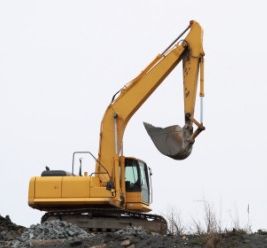A lot of people who have followed the investigation, apprehension, and building of a case against accused mass-murderer former Datu Unsay Mayor Andal Ampatuan Jr had made that topic the epicentre of everything about the Philippines that has to do with impunity. Ampatuan is accused of masterminding the massacre of 57 people in Maguindanao province, Mindanao back in November 2009.

Most likely because 32 of those 57 people were journalists, the story had remained among the top items of the Philippine Media play list for the last couple of years — which is a stroke of luck for the families of the other 25 people who died in that atrocity. Being among “media workers”, it seems, is one sure-fire way to stay on the radar of the National “conscience”.
| SUPPORT INDEPENDENT SOCIAL COMMENTARY! Subscribe to our Substack community GRP Insider to receive by email our in-depth free weekly newsletter. Subscribe to our Substack newsletter, GRP Insider! Learn more |
Compare this to the plight of the thousands of Filipinos who die in preventable disasters almost annually. Where is the “indignation” that the chattering classes of Filipino society are renowned for?
The two top template disasters in the Philippines kill by the thousands…
The Mud Slide template:
Heavy rains followed by a deadly flash flood composed of a torrent of muddy water and logs rushing down from the mountains sweeping entire towns into the sea…
The Interisland Shipwreck template:
Ill-maintained passenger ship oversold and overbooked with only half of its passengers recorded on ship manifest cleared for departure by corrupt Philippine Ports Authority and Philippine Coast Guard officials caught in open water as typhoon strikes…
What is interesting about the Maguindanao massacre is how the backhoe had come to symbolise not just Filipino-styled impunity but the commoditisation of human life in the Philippines.
A man who operated the backhoe said to have been used to bury the victims in the massacre of 52 civilians, including journalists, in Maguindanao, last Monday, is now the subject of a manhunt by Philippine National Police.
Chief Supt. Leonardo Espina, PNP spokesman, said on Wednesday the backhoe operator may lead police investigators to the identities of the armed men who held hostage and later executed the victims.
[…]
Espina said the backhoe, emblazoned with the name of Maguindanao Gov. Andal Ampatuan Sr., was apparently used to dig up the graves where some of the bodies were found.
It is interesting because today, we find ourselves in a similar situation albeit on a bigger scale. We see again the need for mass graves to bury Filipinos en masse in the aftermath of the devastation wrought by Typhoon Sendong upon northern Mindanao — reportedly underneath land being used as garbage dump sites.
So much “indignation” raised against the 57 victims of the Maguindanao massacre in 2009, and so little for the hundreds that may anonymously disappear under a garbage dump never to be remembered by anyone. The significance of the backhoe as a symbol of how Filipinos have all but mechanised the way they deal with template disasters continues to resonate.
Indeed, if we step back to a higher level of abstraction we will find that the Maguindanao massacre fits Philippine template disasters like a glove. Remove the personalities and politics involved and we will find that Filipino-style politically-motivated massacre can also be considered a natural disaster. It comes naturally in a society where disasters-in-the-making whether triggered by Mother Nature or driven by greed and ambition ultimately are outcomes of known instances of negligence that were consciously allowed to fester and turn cancerous.
Perhaps it is time we re-evaluate how we regard preventable deaths in the Philippines and turn our attention to the common denominator of these tragedies — the nature of Philippine society itself.
- This latest Filipino-style ‘anti-corruption’ circus proves that the Philippines needs a serious reboot - November 16, 2025
- Filipinos literal sitting ducks as wind and floods from natural tropical typhoons amplified by years of neglect bear down - November 9, 2025
- Rally NA NAMAN??? - September 20, 2025
I think the big difference is the weapon cf choice i.e. guns vs. floods/landslide, etc. Also there is one of intentions where one man deliberately takes human lives while on the other side is that one man allows other people to die. The results however are the same, human lives ended.
I have always thought that human lives in our oh “so great” society are not as valued as much as they are in the West. It could be the belief in the after life that might be supporting this. I do not know.
I do however ask the same question to our people, “Where is the indignation in the loss of Filipino lives?” Never mind that this could happen in Manila, human lives are human lives.
The Philippines had already condemned the lives of Sendong, Quirino hostage, and other yet-to-be-named future victims of this incompetent admin the moment they have elected AbNoy into office.
Making a pathetically incompetent person pilot a sophisticated airline is no different from directly asking a terrorist to murder its own passengers.
Pinoys, why weep when you simply brought this upon yourselves?
In Nazi Germany…the Concentration Camps and the Death Camps, were located near the residential areas. The stink of the dead decaying bodies, were ten (10) kilometers away, from those camps. Yet, people never complained, even, the odor of the stinking dead bodies piled like logs, were in their midst….They were afraid to complain, and became desensitized.
We have become desensitized,with the : killings, murders, floods, drownings, insensitivities of our leaders, etc…that we don’t respond to them anymore. We are no longer outraged…look at how Noynoy Aquino was smiling, as he visited the flood victims. Maybe, he gets pleasure in tragedies…Have we degenerated to the level of those Germans in Nazi Germany already?